NASA is exploring options for innovative and imaginative uses of two large space telescopes recently transferred to the agency. In a request for information (RFI) published Monday, NASA seeks information about system concepts and architectures that would take advantage of these assets to address NASA's goals in astrophysics, heliophysics, planetary sciences, and human spaceflight.
Nov 28th, 2012
Read more
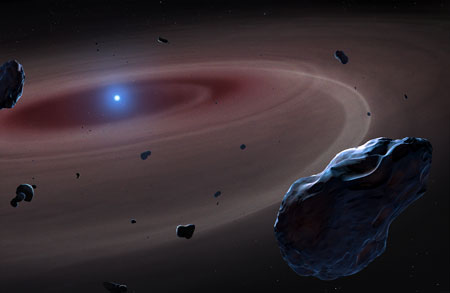 An international team led by researchers from the University of Warwick and Oxford University is now dealing with unexpected results of an experiment with strongly heated graphite (up to 17,000 degrees Kelvin). The findings may pose a new problem for physicists working in laser-driven nuclear fusion and may also lead astrophysicists to revise our understanding of the life cycle of giant planets and stars.
An international team led by researchers from the University of Warwick and Oxford University is now dealing with unexpected results of an experiment with strongly heated graphite (up to 17,000 degrees Kelvin). The findings may pose a new problem for physicists working in laser-driven nuclear fusion and may also lead astrophysicists to revise our understanding of the life cycle of giant planets and stars.
Nov 28th, 2012
Read more
 Scientists have compared cycles of solar magnetic activity over the past 10,000 years - as reconstructed from ice cores - with the action of the planets. The agreement observed is very striking, raising hopes that our ability to forecast periods of intense solar activity may ultimately be improved.
Scientists have compared cycles of solar magnetic activity over the past 10,000 years - as reconstructed from ice cores - with the action of the planets. The agreement observed is very striking, raising hopes that our ability to forecast periods of intense solar activity may ultimately be improved.
Nov 28th, 2012
Read more
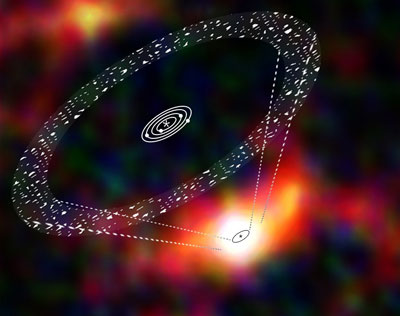 Using ESA's Herschel space observatory, astronomers have discovered vast comet belts surrounding two nearby planetary systems known to host only Earth-to-Neptune-mass worlds. The comet reservoirs could have delivered life-giving oceans to the innermost planets.
Using ESA's Herschel space observatory, astronomers have discovered vast comet belts surrounding two nearby planetary systems known to host only Earth-to-Neptune-mass worlds. The comet reservoirs could have delivered life-giving oceans to the innermost planets.
Nov 27th, 2012
Read more
Researchers use NASA satellites to measure pollution hovering over world's megacities.
Nov 27th, 2012
Read more
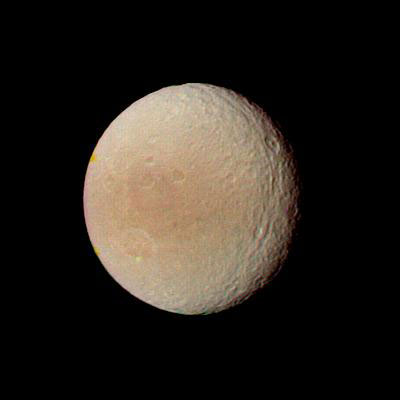 Call it "PAC-MAN, the Sequel." Scientists with NASA's Cassini mission have spotted a second feature shaped like the 1980s video game icon in the Saturn system, this time on the moon Tethys.
Call it "PAC-MAN, the Sequel." Scientists with NASA's Cassini mission have spotted a second feature shaped like the 1980s video game icon in the Saturn system, this time on the moon Tethys.
Nov 26th, 2012
Read more
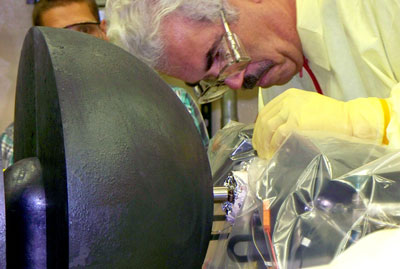 The research team recently demonstrated the first use of a heat pipe to cool a small nuclear reactor and power a Stirling engine.
The research team recently demonstrated the first use of a heat pipe to cool a small nuclear reactor and power a Stirling engine.
Nov 26th, 2012
Read more
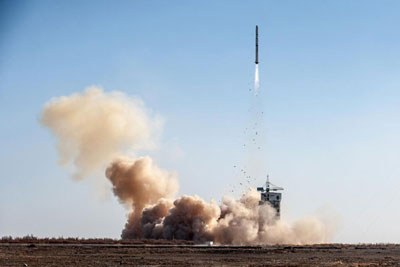 The Jiuquan Satellite Launch Center confirmed that China successfully launched the Yaogan XVI remote-sensing satellite into space at 12:06 am Sunday.
The Jiuquan Satellite Launch Center confirmed that China successfully launched the Yaogan XVI remote-sensing satellite into space at 12:06 am Sunday.
Nov 26th, 2012
Read more
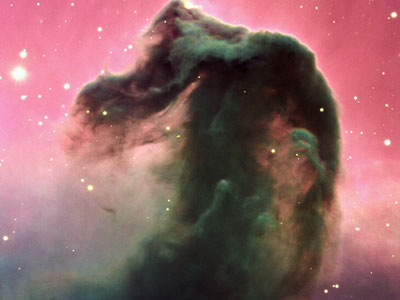 Using IRAM's 30m-telescope, astronomers find indications for vast petroleum reservoirs in the Horsehead Nebula.
Using IRAM's 30m-telescope, astronomers find indications for vast petroleum reservoirs in the Horsehead Nebula.
Nov 23rd, 2012
Read more
A team of scientists studied the hydrogen in water from the Martian interior and found that Mars formed from similar building blocks to that of Earth, but that there were differences in the later evolution of the two planets. This implies that terrestrial planets, including Earth, have similar water sources - chondritic meteorites.
Nov 22nd, 2012
Read more
The mantles of Earth and other rocky planets are rich in magnesium and oxygen. Due to its simplicity, the mineral magnesium oxide is a good model for studying the nature of planetary interiors. New work from a team led by Carnegie's Stewart McWilliams studied how magnesium oxide behaves under the extreme conditions deep within planets and found evidence that alters our understanding of planetary evolution.
Nov 22nd, 2012
Read more
The European Space Agency and EUMETSAT today signed the agreement on the Meteosat Third Generation weather satellite system at the ESA Ministerial Council in Naples, Italy.
Nov 22nd, 2012
Read more
 NASA has completed three key milestones in its development of new atmospheric deceleration technologies to support exploration missions across the solar system.
NASA has completed three key milestones in its development of new atmospheric deceleration technologies to support exploration missions across the solar system.
Nov 21st, 2012
Read more
Members of European Space Agency (ESA) on Wednesday approved a multi-year budget of 10 billion euros ($12.3 billion), ESA director general Jean-Jacques Dordain said, hailing this as a 'big success'.
Nov 21st, 2012
Read more
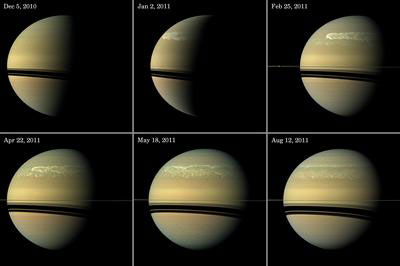 Astronomers have gotten a first look at the aftermath of Saturn's 'Great Springtime Storm' thanks to the heat-seeking capabilities of the international Cassini spacecraft and two ground-based telescopes. Even though the cosmic event is hidden to the naked eye, a giant oval vortex continues to exist long after the visible effects of the storm have subsided.
Astronomers have gotten a first look at the aftermath of Saturn's 'Great Springtime Storm' thanks to the heat-seeking capabilities of the international Cassini spacecraft and two ground-based telescopes. Even though the cosmic event is hidden to the naked eye, a giant oval vortex continues to exist long after the visible effects of the storm have subsided.
Nov 20th, 2012
Read more
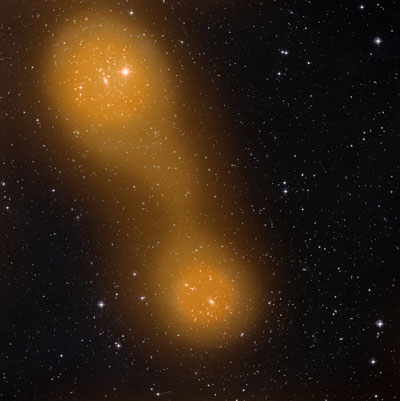 ESA's Planck space telescope has made the first conclusive detection of a bridge of hot gas connecting a pair of galaxy clusters across 10 million light-years of intergalactic space.
ESA's Planck space telescope has made the first conclusive detection of a bridge of hot gas connecting a pair of galaxy clusters across 10 million light-years of intergalactic space.
Nov 20th, 2012
Read more
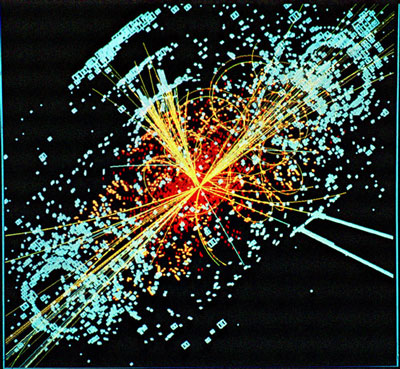 The search for a mysterious subatomic particle can certainly involve some enormous tools, not to mention a multitude of scientists. The effort to find the elusive "Higgs boson" includes over 5,800 scientists from 56 countries. It's a subatomic particle that gives other particles, such as quarks and electrons, their mass.
The search for a mysterious subatomic particle can certainly involve some enormous tools, not to mention a multitude of scientists. The effort to find the elusive "Higgs boson" includes over 5,800 scientists from 56 countries. It's a subatomic particle that gives other particles, such as quarks and electrons, their mass.
Nov 20th, 2012
Read more
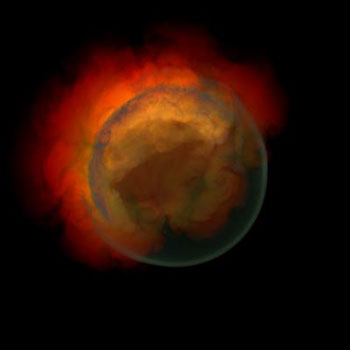 Supercomputer simulations have revealed that a type of oddly dim, exploding star is probably a class of duds - one that could nonetheless throw new light on the mysterious nature of dark energy.
Supercomputer simulations have revealed that a type of oddly dim, exploding star is probably a class of duds - one that could nonetheless throw new light on the mysterious nature of dark energy.
Nov 20th, 2012
Read more

 Subscribe to our Space Exploration News feed
Subscribe to our Space Exploration News feed










